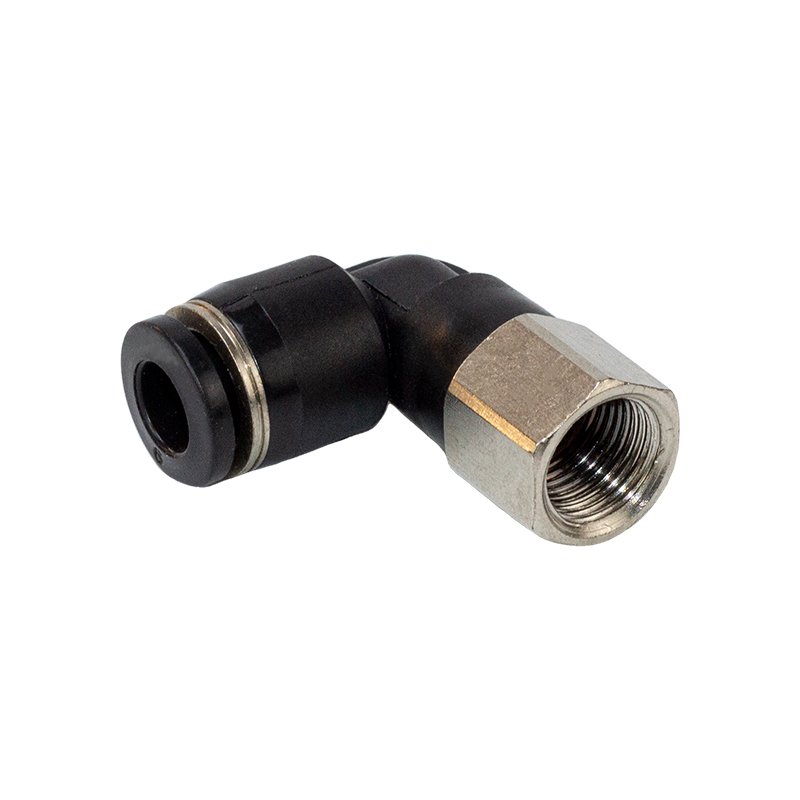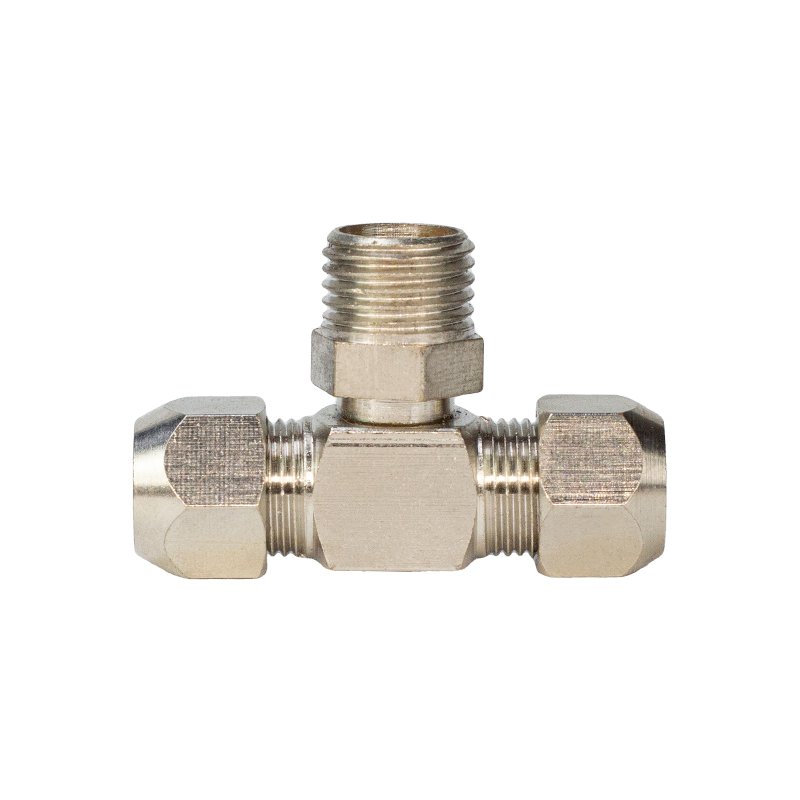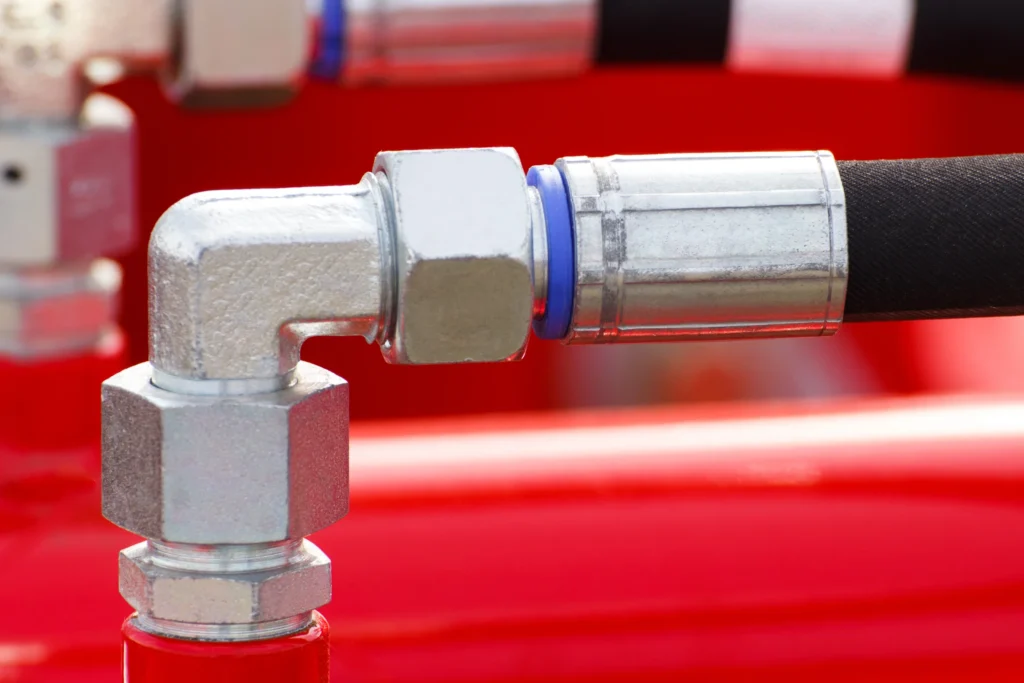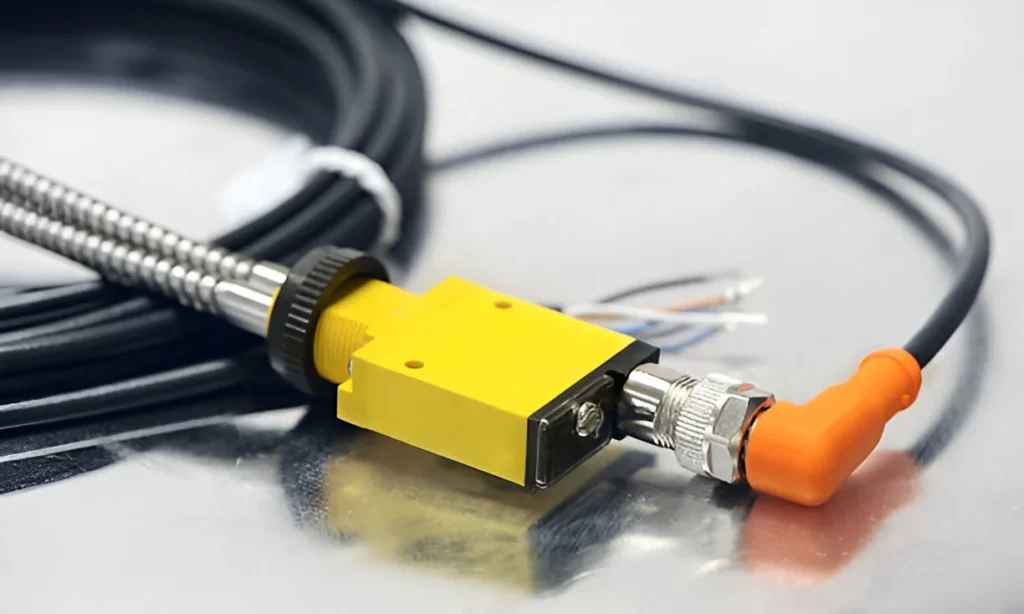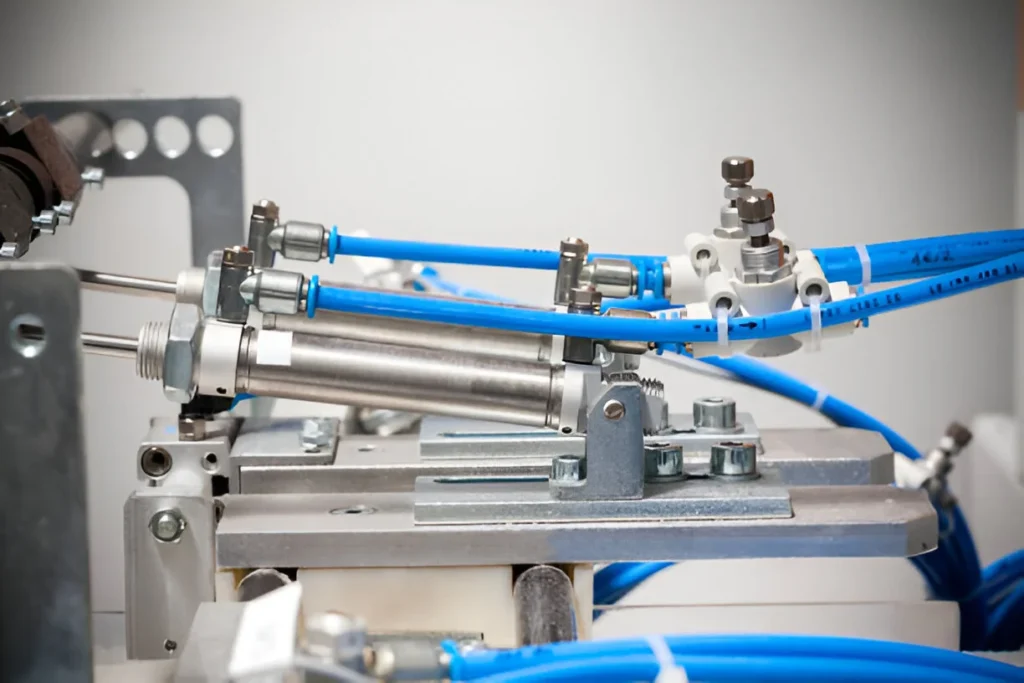What is a single acting cylinder?
When we talk about key components in the design of automation systems and machinery, single-acting cylinders certainly occupy a special place. But what exactly is a single-acting cylinder? Why is it so important in modern industry?
A single-acting cylinder is a pneumatic actuator that uses compressed air to generate one-way force. Compared with double-acting cylinders (which can produce force in both directions), single-acting cylinders are characterized by the fact that they can only exert power in one direction, and the return stroke usually relies on external forces, such as springs or gravity. This structural simplification not only makes single-acting cylinders more compact and cost-effective, but also provides an ideal solution for specific applications.
Importance
The importance of single-acting cylinders is mainly reflected in the following aspects:
- High efficiency and reliability: Single-acting cylinders provide an efficient and reliable power source in applications requiring fast linear motion. Due to its relatively simple structure, this reduces the failure rate and ensures long-term stable operation.
- Cost-Effectiveness: For many industrial applications, cost is an important consideration. Single-acting cylinders are generally more economical than double-acting cylinders due to their simple construction, making them an attractive option when budget is limited.
- Adaptability and flexibility: Due to their compact design, single-acting cylinders can be easily integrated into a variety of mechanical systems, even in space-constrained applications. This adaptability and flexibility make single-acting cylinders ideal for solving specific engineering challenges.
- Wide Range of Applications: From automatic door controls to robotic arm operations to precision manufacturing processes, single-acting cylinders are used in a wide range of applications. They play an indispensable role in automation technology, driving improvements in production efficiency and process accuracy.
Basic concept of cylinder
Briefly introduce the basic concepts of cylinders and their applications in industry
Cylinder, as an actuator widely used in automation control systems, plays a vital role. It relies on compressed air to achieve energy conversion, thereby producing linear motion or rotational motion to promote the work of various mechanical equipment. Fundamentally, cylinders can be divided into two categories based on their working principles: single-acting cylinders are capable of applying force in one direction, and double-acting cylinders are capable of exerting force in two directions.
In the fields of industrial production and automation, cylinders are used almost everywhere. They are widely used in machinery manufacturing, light industry, heavy industry, automated assembly lines, material handling equipment and other fields. By using cylinders, robotic arms on production lines can move parts accurately, assembly machines can complete work tasks efficiently, and material transfer systems can deliver products smoothly. The application of cylinders not only greatly improves production efficiency and work accuracy, but also makes it possible to realize complex automation projects.
In addition to these traditional application scenarios, with the development of technology, the design and functions of cylinders are also constantly improving and innovating. For example, cylinders integrated with smart sensors can monitor their working status in real time and communicate with other devices through Internet of Things (IoT) technology, thereby achieving a more intelligent and automated production process. Such progress not only improves production efficiency, but also lays a solid foundation for the realization of Industry 4.0.
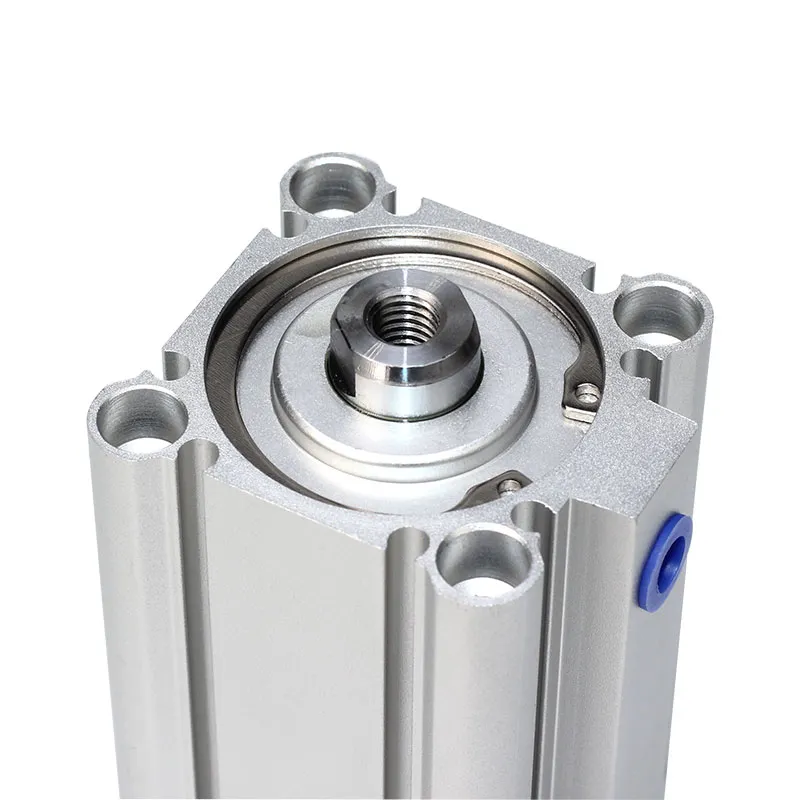
Basic working principle of single-acting cylinder
The working principle of a single-acting cylinder is relatively simple, but its design makes it an integral part of many industrial and mechanical applications. This type of cylinder relies on compressed air to generate power and achieve linear motion. This simple yet effective operating principle of single-acting cylinders makes them very useful in applications where reliable thrust and quick return are required, such as in automatic door controls, light lifting equipment, and certain types of automation installations. Its basic working principle can be summarized as the following key steps:
- Compressed air input: Single-acting cylinders receive compressed air through an inlet. This inlet is usually located at one end of the cylinder, which has a piston inside.
- Producing Thrust: When compressed air enters the cylinder, it exerts pressure on one side of the piston. Because the air pressure is greater than the air pressure on the other side of the piston (or greater than the reaction force of the return mechanism), the piston will move along the cylinder. This movement is converted into power, which can be used to push or move mechanical parts connected to the piston rod.
- One-way action: Unlike a double-acting cylinder, a single-acting cylinder’s piston only moves in one direction (usually pushing outward). The return stroke of a piston – the return to its starting position – is usually accomplished by an external force, such as spring return or gravity.
- Spring return or gravity return: After the piston is pushed out, some mechanism is needed to return it to its original position. In most single-acting cylinders, this is accomplished by a spring mounted on the other side of the piston, which is compressed as the piston is pushed out and uses its stored energy to pull the piston back after the compressed air is released. In some applications, gravity can also be used to help the piston return, especially when the direction of movement of the piston is consistent with the direction of gravity.
- Control and Regulation: By controlling the amount and pressure of air entering the cylinder, the moving speed and thrust of the piston can be precisely controlled. This control is usually achieved by a solenoid valve or other type of pneumatic control valve, making the operation of the single-acting cylinder both flexible and accurate.
Basic types of cylinders: the difference between single-acting and double-acting cylinders.
Cylinders are basic components in the field of automation and mechanical design and can be divided into several basic types based on their design and working principles. These types mainly include single-acting cylinders, double-acting cylinders, rotating cylinders, cylinders with guide rods, etc. Among these types, single-acting cylinders and double-acting cylinders are the two most common and basic forms. Understanding the differences between these two types of cylinders is critical to selecting the correct type for a specific application.
Single acting cylinder
A single-acting cylinder is a cylinder with only one direction of action. It relies on compressed air to push the piston in one direction, and the return action is usually completed by a spring or gravity. This means that a single-acting cylinder can only move in one direction under the influence of compressed air. They are typically used for simple push-pull operations, with the piston automatically returning to its original position when no compressed air is supplied.
Double acting cylinder
The main difference between a double-acting cylinder and a single-acting cylinder is that it can have controlled movement in both directions, i.e. the piston can be pushed forward by compressed air or pulled back by compressed air. This is accomplished by providing a port at each end of the cylinder, allowing compressed air to force the piston from both directions. Double-acting cylinders do not rely on external forces (such as springs or gravity) to achieve the return action of the piston, so they provide more power and more flexible control.
Main difference
- Action mode: Single-acting cylinders are driven by compressed air in only one direction and usually require external force (such as springs) to return; double-acting cylinders can be driven by compressed air in both directions without external force.
- Structural complexity: The structure of a single-acting cylinder is relatively simple and the cost is low; while the structure of a double-acting cylinder is more complex and the cost is higher.
- Application scenarios: Single-acting cylinders are suitable for situations where the force requirement is not large and only one-way movement is required, such as simple push-pull equipment. Double-acting cylinders are suitable for applications that require bidirectional control and require greater force, such as robot arms, precision-controlled production lines, etc.
- Control flexibility: The double-acting cylinder provides higher control flexibility and can accurately control the moving speed and position of the piston, making it suitable for more complex automated control systems.
Single-acting cylinders and double-acting cylinders each have their own characteristics and applicable scenarios. The choice of which type of cylinder to use depends on the needs of the specific application, including factors such as the type of motion required, the amount of force required, cost budget and control complexity.
Single-acting cylinder definition and basic structure
A single-acting cylinder is a pneumatic actuator that uses compressed air to generate unidirectional force to drive mechanical movement. This type of cylinder can only move in one direction, and its return to the original position usually relies on an external force, such as a spring or gravity. Single-acting cylinders are designed to simplify and perform linear motion tasks such as pushing, pulling, or lifting objects. Due to its relatively simple structure, it is usually used in applications with low force requirements and compact structure.
The basic structure of a single-acting cylinder consists of the following main components:
- Cylinder Barrel: This is the main part of a single-acting cylinder, usually made of metal such as aluminum or steel. The barrel has a smooth interior that houses other components and provides a sealed environment so that compressed air can efficiently drive the piston.
- Piston: The piston is located inside the cylinder barrel and can move along the cylinder axis. It converts the force of compressed air into mechanical motion. Pistons are usually equipped with sealing rings to prevent gas leakage and ensure efficient transmission of pressure.
- Piston Rod: This is a rod attached to the piston that extends or retracts into the cylinder barrel when the piston moves. One end of the piston rod is usually connected to a mechanical device outside the cylinder to transmit the power generated by the cylinder to the component that needs to move.
- End caps: Both ends of the cylinder are closed by end caps. In single-acting cylinders, one end cap may contain connections for the compressed air supply. The end caps also provide points for mounting and securing the cylinder.
- Return mechanism: In single-acting cylinders, there is usually a spring or gravity as a return mechanism to help the piston return to its original position. The spring return mechanism is located on the opposite end of the piston or inside the piston, and when the compressed air is released, the force of the spring pushes the piston back into its original position.
How does a single-acting cylinder achieve linear motion?
Single-acting cylinders achieve linear motion through the following steps:
- Supply of compressed air: When compressed air is fed into the cylinder barrel through the inlet of the cylinder, this is a key step in starting linear motion. The inflow of compressed air creates a high-pressure environment.
- Push of the piston: Compressed air exerts pressure on the piston because the high pressure formed inside the cylinder barrel is greater than the pressure on the other side of the piston (in a single-acting cylinder, this side is usually atmospheric pressure or spring return force). This pressure difference pushes the piston along the cylinder barrel, creating linear motion.
- Extension of the piston rod: As the piston moves, the piston rod fixedly connected to the piston will also extend out of the cylinder barrel accordingly. This reaching action translates into the required mechanical power, which can be used directly to push or pull parts of the mechanism.
- The role of the return mechanism: After the single-acting cylinder completes its pushing action, some way is needed to return the piston to the starting position. This is usually accomplished by a spring installed inside the cylinder or connected to the piston. The spring is compressed when the piston is pushed out. When the compressed air is released or cut off, the restoring force of the spring pulls the piston back to its original position. In some designs, gravity can also be used to assist piston return.

How does a single-acting cylinder achieve one-way movement of the piston through compressed air?
Single-acting cylinders use compressed air to move a piston in one direction. It is a relatively simple but efficient process. The steps are as follows:
- Introduction of compressed air: The single-acting cylinder receives compressed air through its only air port. This port is usually located at one end of the cylinder. When compressed air is introduced inside the cylinder, it begins to exert pressure on the piston inside the cylinder.
- Produces thrust: Compressed air exerts pressure on one side of the piston because the pressure on this side exceeds the pressure on the other side (in a single-acting cylinder, the other side may be the pressure provided by an external return mechanism, such as a spring, or atmospheric pressure ), the piston will start to move along the cylinder barrel. This movement is unidirectional and driven by compressed air inside the cylinder.
- Extension of the piston rod: As the piston moves, the piston rod fixedly connected to it will also extend out of the cylinder. This extension action is key to achieving mechanical action and can be used to push or operate mechanical components attached to the piston rod.
- Return process: After the piston moves to the farthest end, it needs to return to the initial position for the next action. In single-acting cylinders, this is usually accomplished by a built-in spring or by using gravity. When the compressed air is released or expelled from the cylinder, the force of the spring or gravity pushes the piston back to its starting position. This return process is a key complement to the unidirectional movement of the single-acting cylinder, ensuring that it can carry out continuous working cycles.
How about the backhaul mechanism?
The return mechanism is an important part of the single-acting cylinder. It ensures that the cylinder piston can return to its initial position after completing the propulsion action to prepare for the next action. The main return mechanisms include spring return and gravity return. Their working principles are as follows:
1. Spring return mechanism
- Principle: In single-acting cylinders, spring return is one of the most common return mechanisms. This mechanism works by installing a spring inside the cylinder, which is located on one side of the piston (usually the non-operating side). When compressed air moves the piston, the spring is compressed, storing energy.
- Return action: When the compressed air is released and the pressure inside the cylinder is reduced, the energy stored in the spring is released, and the spring stretches and returns to its original shape. The force generated by this stretching action pushes the piston back to its original position. The spring needs to be designed to have enough force to push back the piston and its attached load, but not so strong that it creates excessive resistance when the cylinder moves.
2. Gravity return mechanism
- Principle: Gravity return relies on gravity to realize the return movement of the piston. This mechanism is suitable for situations where the installation position of the cylinder and the direction of piston movement can utilize the force of gravity.
- Return action: After compressed air pushes the piston upward or in any direction, gravity can naturally pull the piston back to its starting position if the cylinder is installed in such a way that gravity is sufficient to overcome the resistance of the piston and load. This return method does not require additional components, but has specific requirements for the installation position and direction of the cylinder.
3.Select and apply
- Spring return: suitable for piston movement in most directions, especially when the direction of movement of the piston is inconsistent with the direction of gravity, or when a precise stop at a specific position is required. Spring return provides a reliable, controllable return force suitable for a variety of applications.
- Gravity return: suitable for applications where the piston movement direction is consistent with the direction of gravity, especially in simple situations that do not require additional return force. But it is limited by the installation location and direction and may not be suitable for all types of mechanical designs.
Application areas of single-acting cylinders
The simple design and high efficiency of single-acting cylinders make them very popular in a variety of applications. These application areas include but are not limited to:
- Automated manufacturing: In automated production lines, single-acting cylinders are often used to perform simple actions such as pushing, positioning, or clamping parts.
- Automotive industry: Single-acting cylinders are used in various automotive components, such as engine control systems, components of braking systems, and automatic door opening and closing systems.
- Construction and Civil Engineering: In the construction sector, single-acting cylinders are used to control the automatic opening and closing of doors, and in security systems as part of emergency release mechanisms.
- Medical equipment: In the medical industry, single-acting cylinders are used in various diagnostic and treatment equipment, such as adjusting the height of hospital beds or operating operating lights.
- Packaging industry: Single-acting cylinders are widely used in packaging machinery to perform simple material movement, positioning and clamping operations.
- Agricultural machinery: In agricultural equipment, single-acting cylinders are used to control simple mechanical actions, such as opening and closing drainage gates or adjusting the position of spray equipment.
- Food Processing: In food production lines, single-acting cylinders are often used for simple operating tasks, such as controlling the movement of cutting machines, sorting equipment, and assisting in the packaging process.
Reasons for choosing single-acting cylinders
- Simplified Design: Because single-acting cylinders are simple in construction, they are easy to install and maintain, especially in applications where space is limited or simplicity of design is important.
- Cost-Effectiveness: Single-acting cylinders are generally less expensive than double-acting cylinders, making them ideal for projects with a limited budget.
- Energy Efficiency: In some applications, single-acting cylinders can be more energy efficient by using compressed air in only one direction.
- Specific functional requirements: In applications that require thrust in only one direction, single-acting cylinders are the most direct and effective choice.
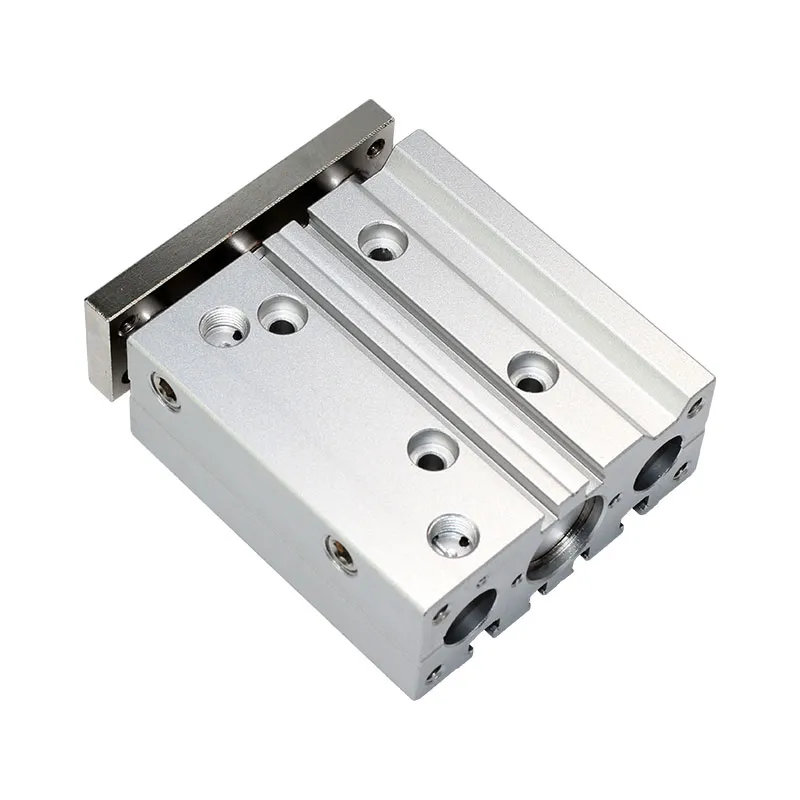
Advantages and disadvantages of single-acting and double-acting cylinders
Single-acting cylinders and double-acting cylinders each have their own specific advantages and disadvantages, which determine their applicability in different application scenarios. The choice of which type of cylinder is determined by the needs of the specific application, including factors such as direction of motion, required force, cost constraints and installation space. The pros and cons of each are listed below:
Single acting cylinder
Advantage:
- Simple construction: Single-acting cylinders have a simpler design, which makes them easier to manufacture and maintain.
- Cost-Effectiveness: Due to their simple construction, single-acting cylinders are generally more economical than double-acting cylinders, especially for cost-sensitive applications.
- Flexible installation: Smaller size and lighter weight make single-acting cylinders easier to install in space-constrained environments.
- Energy efficiency: Using compressed air in only one direction may improve energy efficiency in some applications.
Shortcoming:
- Limitation of range of motion: Only one-way movement is possible, which limits their scope of application.
- Return force dependence: Additional mechanisms (such as springs or gravity) are required to achieve return, which may affect its thrust and speed.
Double acting cylinder
Advantage:
- Bidirectional control: Able to provide power in both directions, improving the flexibility and control accuracy of mechanical movements.
- Powerful Thrust: Double-acting cylinders can provide greater thrust due to the ability to apply pressure in both directions.
- Wider applications: Suitable for complex applications that require precise control of two-way motion, such as automated machinery and precision engineering.
Shortcoming:
- Higher cost: The structure is more complex, and the manufacturing and maintenance costs are usually higher than those of single-acting cylinders.
- Energy consumption: Using compressed air in both directions may result in higher energy consumption.
- Complex installation and maintenance: The complexity of double-acting cylinders can make installation and maintenance more cumbersome.
Maintenance and troubleshooting
Maintenance and troubleshooting are key to ensuring the normal operation of single-acting and double-acting cylinders. Proper maintenance can significantly extend the service life of the cylinder and reduce the probability of failure. The following are maintenance and troubleshooting guidelines for both types of cylinders:
single acting cylinder
Maintenance recommendations
- Regular inspection: Regularly check the wear of the cylinder, seals and piston rod, and replace damaged parts in time.
- Clean the piston rod: Keep the piston rod clean to prevent dust and dirt from entering the inside of the cylinder, which may cause seal damage and leakage.
- Check the air source: Make sure the air source is clean and dry to prevent moisture and contaminants from affecting the normal operation of the cylinder.
- Spring inspection: For single-acting cylinders with spring returns, check the condition of the spring regularly to make sure it is not broken or excessively worn.
Troubleshooting
- The piston does not move: Check whether the air source is normal, whether the air path is blocked, and whether the solenoid valve is working properly.
- The piston moves slowly or weakly: It may be due to insufficient air source pressure, internal leakage caused by worn seals, or damaged springs.
- Cylinder leakage: Check and replace worn seals and make sure connections are tight.
Double acting cylinder
Maintenance recommendations
- Check seals regularly: The wear of seals is one of the common causes of failure of double-acting cylinders and needs to be checked and replaced regularly.
- Keep the cylinder clean: Make sure the inside of the cylinder and piston rod are kept clean to avoid damage caused by foreign matter.
- Air source inspection: It is also necessary to ensure the quality of the air source to avoid moisture and oil contamination.
- Check the end caps and connectors: Regularly check the tightness of the end caps and connectors to avoid leakage or damage due to looseness.
Troubleshooting
- The piston does not move or responds slowly: Check whether the air path is clear, whether the air source pressure is sufficient, and whether the solenoid valve is working properly.
- Leakage at both ends of the cylinder: The seal may be damaged or the end cover is loose. The seal needs to be replaced and the end cover must be tightened.
- The piston movement is not smooth: it may be due to contaminants in the air source, and the air source and the inside of the cylinder need to be cleaned.
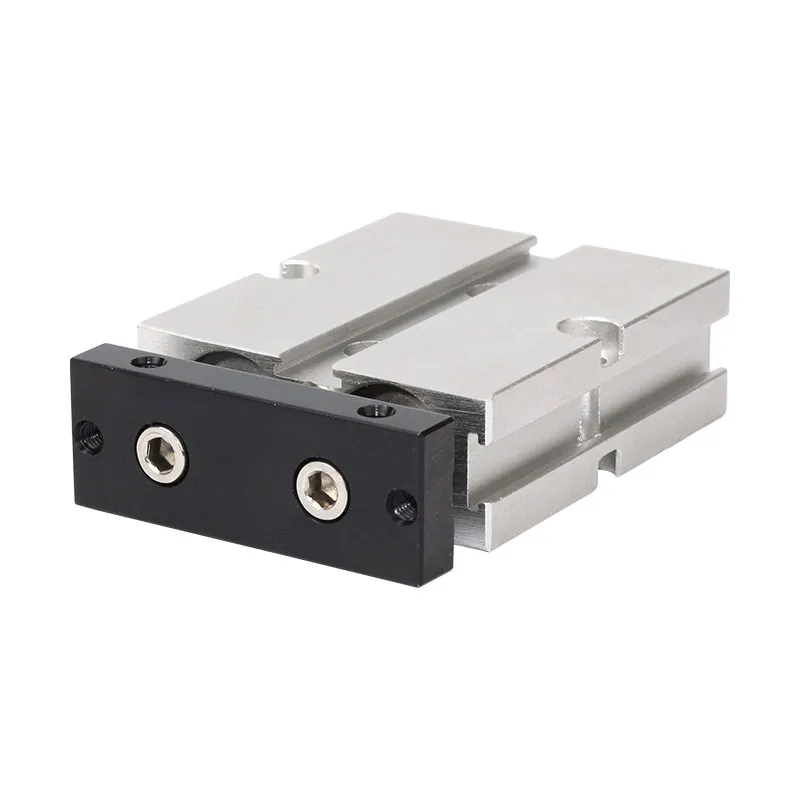
Summarize
Single-acting cylinders occupy an important position in the fields of industrial automation and mechanical design due to their unique design and functional characteristics. The following is a summary of the key features and industrial application value of single-acting cylinders:
Key features
- Simple structure: Single-acting cylinders have a simpler design and only move in one direction, which makes them easier to produce, install and maintain.
- Cost-Effectiveness: Due to their simple design, single-acting cylinders are often more economical than double-acting cylinders or other complex cylinders, making them suitable for projects with limited budgets.
- One-way action: Single-acting cylinders can only provide power in one direction, and the return stroke usually relies on springs or gravity. This one-way action simplifies many industrial processes.
- Easy to integrate: Their compact size and lightness allow single-acting cylinders to be easily integrated into a variety of machinery and automation systems, even in space-constrained applications.
Value in industrial applications
- Improve production efficiency: Single-acting cylinders can be used to simplify automated processes such as pushing, pulling or positioning operations, helping to increase the efficiency of the production line.
- Reduced costs: Their economics are reflected not only in purchase costs but also in maintenance and operating costs, helping to reduce overall project budgets.
- Strong adaptability: Due to its simple structure and easy integration, single-acting cylinders show extremely high adaptability in different industrial applications, from medical equipment to automated production lines, they can be found.
- Reliability and durability: The design of single-acting cylinders ensures that they can work reliably in harsh industrial environments, and their simple mechanical structure also means less failure rates and longer service life.
In summary, single-acting cylinders provide tremendous value in industrial automation and machinery design through their structural simplicity, cost-effectiveness, and good adaptability, especially when reliable, economical, and efficient one-way power solutions are required. program occasion.

